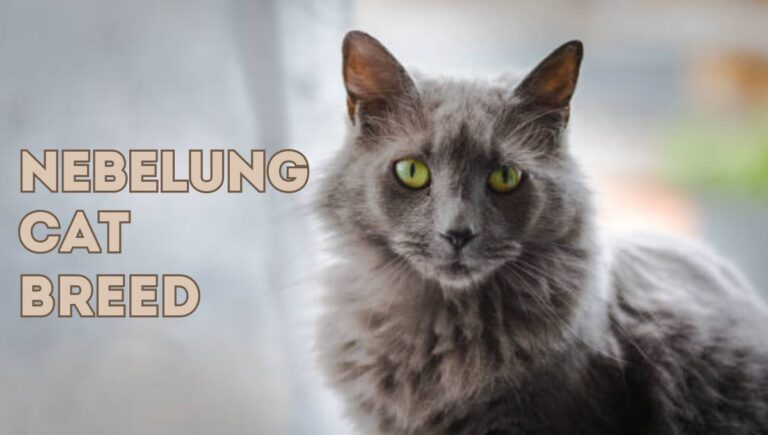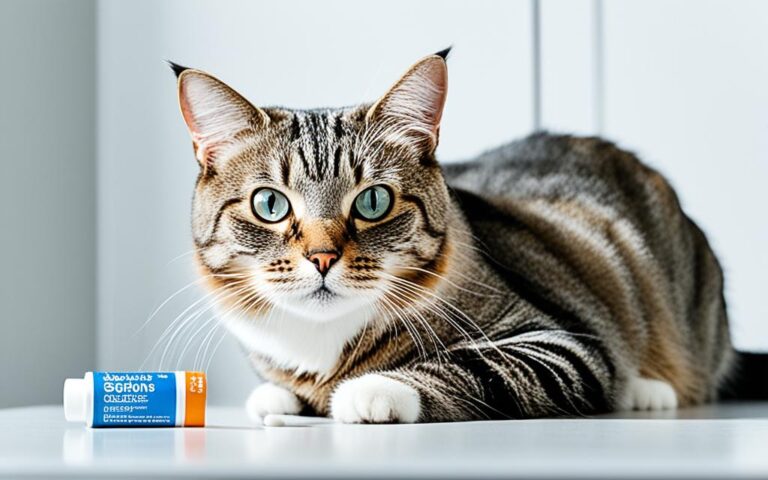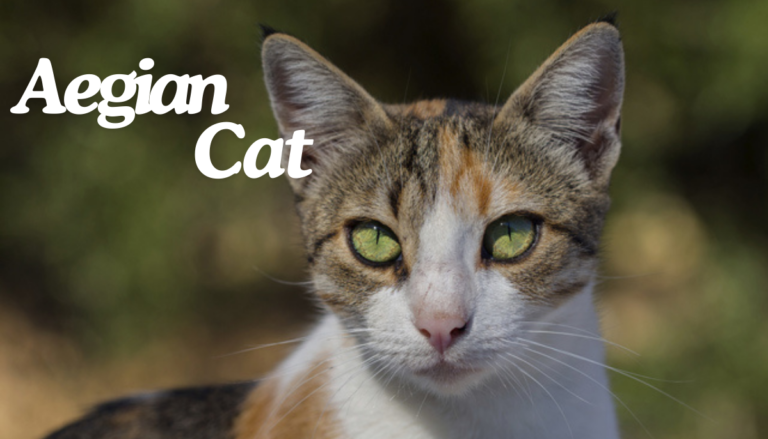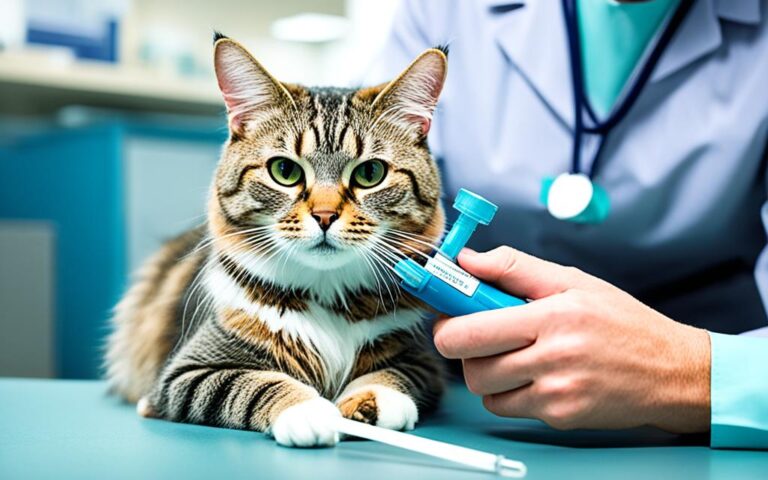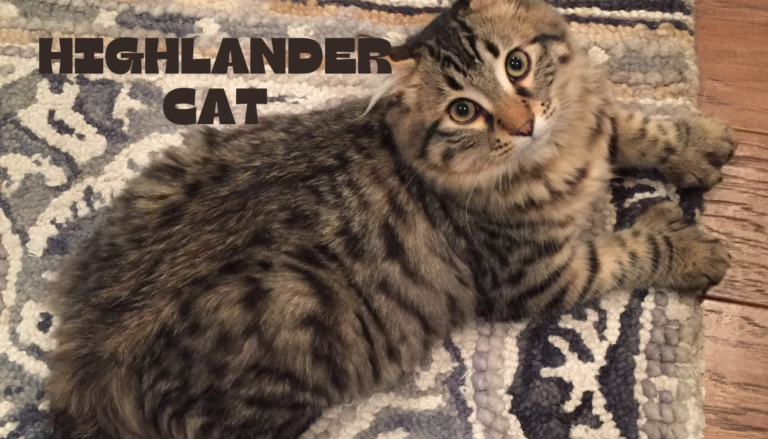Balinese Cat

I. Introduction to the Balinese Cat
A. Brief Description of the Balinese Cat
Welcome to our guide on the captivating Balinese cat breed! Named after the graceful dancers of the Indonesian island of Bali, the Balinese cat is truly a sight to behold. Renowned for its striking appearance and charming personality, the Balinese cat is a breed that captivates the hearts of cat enthusiasts around the world.
With their sleek bodies, elegant lines, and striking blue almond-shaped eyes, Balinese cats exude an air of sophistication and grace. Their most distinctive feature is their luxurious, silky coat, which comes in a variety of colors and patterns, including seal, blue, chocolate, and lilac.
Balinese cats are known for their affectionate and sociable nature. They thrive on human companionship and are often described as being “people-oriented” cats. They are intelligent and curious, often displaying a playful and mischievous side. Despite their regal appearance, Balinese cats are surprisingly vocal and enjoy engaging in conversations with their human companions.
Table of Contents
II. Origin and History of the Balinese Cat
The origin and history of the Balinese cat are as fascinating as the breed itself. To truly appreciate this majestic feline, we must journey back in time to uncover its roots and historical significance.
A. Origins and Geographical Region
The Balinese cat’s origins can be traced back to the enchanting island of Bali, Indonesia. Despite its name suggesting a direct link to Bali, the breed actually originated in the United States in the 1950s. Breeders sought to produce a long-haired version of the Siamese cat, resulting in what we now know as the Balinese.
B. Breeds That Played a Role
The Balinese cat owes its distinctive features to its Siamese ancestors. The breeders crossed Siamese cats with other long-haired breeds, such as the Turkish Angora and the Himalayan, to develop the Balinese’s luxurious coat and elegant physique. Through careful breeding practices, they were able to refine the breed’s appearance while maintaining its beloved Siamese traits.
C. Influence on Characteristics
The Balinese cat’s origin has significantly influenced its characteristics today. From its Siamese heritage, the Balinese inherits its striking blue almond-shaped eyes, sleek body, and pointed coloration. The infusion of long-haired breeds contributes to its silky coat and flowing tail, setting it apart from its short-haired Siamese relatives.
D. Folklore and Legends
While there are no specific folklore or legends surrounding the development of the Balinese cat, its graceful demeanor and exotic appearance have inspired admiration and intrigue for centuries. In Indonesian culture, cats are often revered as symbols of luck and prosperity, further enhancing the mystique surrounding the Balinese breed.
III. Physical Characteristics of the Balinese Cat
A. Balinese Cat Breed Overview
| Field | Information |
|---|---|
| Height | 9-10 inches |
| Weight | 6-11 pounds |
| Life Span | 12-16 years |
| Good With | Children, other pets |
| Temperament | Affectionate, social |
| Intelligence | High |
| Shedding Amount | Low |
| Grooming | Moderate |
| Exercise Needs | Moderate |
| Energy Level | High |
| Drool Amount | Low |
| Coat Length/Texture | Long, silky |
| Colors | Seal, blue, chocolate, lilac, and more |
| Patterns | Pointed |
Height: Balinese cats typically stand between 9 to 10 inches at the shoulder.
Weight: They usually weigh between 6 to 11 pounds, with males being larger than females.
Life Span: The Balinese cat breed has a relatively long life span, ranging from 12 to 16 years with proper care and nutrition.
Good With: Balinese cats are known for their sociable nature and get along well with children, other pets, and even cat-friendly dogs.
Temperament: Balinese cats are affectionate, social, and thrive on human companionship. They are often described as “people-oriented” cats.
Intelligence: Highly intelligent and curious, Balinese cats enjoy interactive play and mental stimulation.
Shedding Amount: Despite their long coats, Balinese cats have low shedding levels, making them suitable for individuals with allergies.
Grooming: While their coats are luxurious, Balinese cats require only moderate grooming to keep them looking their best. Regular brushing helps prevent matting and reduces shedding.
Exercise Needs: Balinese cats have moderate exercise needs and enjoy playing games and exploring their environment.
Energy Level: They possess a high energy level and enjoy engaging in playful activities.
Drool Amount: Balinese cats are not known for excessive drooling, keeping their surroundings clean and tidy.
Coat Length/Texture: Balinese cats have long, silky coats that lie close to their bodies, giving them an elegant appearance.
Colors: Balinese cats come in a variety of colors, including seal, blue, chocolate, lilac, and more.
Patterns: The most common pattern seen in Balinese cats is the pointed pattern, where the color is concentrated on the ears, face, paws, and tail, while the body is lighter in color.
B. Balinese Cat’s Size, Coat Type, and Color Variations
The Balinese cat is renowned for its graceful physique, luxurious coat, and stunning color variations. Let’s delve into the specifics of their size, coat type, and the mesmerizing array of colors and patterns they come in.
Size
Balinese cats are of medium size, with males typically being slightly larger and heavier than females. On average, Balinese cats stand between 9 to 10 inches at the shoulder and weigh between 6 to 11 pounds. However, individual cats may vary in size, with some males reaching up to 12 pounds.
Coat Type
The Balinese cat’s coat is one of its most distinctive features. It is long, silky, and fine-textured, lying close to the body and accentuating its elegant lines. Despite its luxurious appearance, the Balinese coat requires only moderate grooming to keep it looking its best. Regular brushing helps prevent matting and reduces shedding, making it an ideal choice for those with allergies.
Color Variations
Balinese cats come in a captivating array of colors, ranging from the traditional seal point to more rare and exotic shades. The most common colors include:
- Seal: The seal point Balinese cat has a rich, dark brown color on its points, including the ears, face, paws, and tail, with a lighter body color.
- Blue: The blue point Balinese cat features a soft, bluish-gray color on its points, creating a striking contrast against its lighter body.
- Chocolate: Chocolate point Balinese cats have warm, cocoa-colored points, adding a touch of sweetness to their appearance.
- Lilac: Lilac point Balinese cats exhibit a pale, lavender-gray color on their points, giving them a delicate and ethereal beauty.
In addition to these traditional colors, Balinese cats can also come in less common variations such as cream, red, and tortie points, each with its own unique charm.
Coat Texture and Length
The Balinese cat’s coat texture is soft, silky, and fine, with a luxurious feel to the touch. Despite its length, the coat lies close to the body, accentuating the cat’s sleek and elegant appearance. This fine texture contributes to the Balinese cat’s overall air of sophistication and refinement.
Common Color Patterns
The most common color pattern seen in Balinese cats is the pointed pattern. In this pattern, the color is concentrated on the ears, face, paws, and tail, while the body is lighter in color. This creates a striking contrast that highlights the cat’s beautiful features and adds to its allure.
C. Distinctive Features of the Balinese Cat
The Balinese cat is renowned for its striking appearance and unique physical characteristics that set it apart from other breeds. Let’s explore some of the distinctive features that make the Balinese cat truly one-of-a-kind.
1. Elegant Body Structure
One of the most distinctive features of the Balinese cat is its elegant body structure. Balinese cats have long, slender bodies with graceful lines and proportions. Their lithe physique gives them a regal and statuesque appearance, reminiscent of their Siamese ancestors.
2. Striking Blue Almond-Shaped Eyes
The Balinese cat’s eyes are often described as mesmerizing and hypnotic. They have striking blue almond-shaped eyes that captivate all who gaze into them. These piercing blue eyes are set against the cat’s pointed coloration, creating a dramatic and captivating contrast.
3. Long, Flowing Tail
Balinese cats have long, slender tails that complement their elegant body structure. Their tails are beautifully proportioned and taper to a fine point, adding to their overall grace and poise. When in motion, the Balinese cat’s tail moves with fluidity and grace, enhancing its air of sophistication.
4. Wedge-Shaped Head
Another distinctive feature of the Balinese cat is its wedge-shaped head. Balinese cats have angular, refined heads with straight profiles and pronounced cheekbones. This distinctive head shape gives them a unique and aristocratic appearance that sets them apart from other breeds.
5. Fine, Silky Coat
The Balinese cat’s coat is one of its most luxurious features. It is long, fine-textured, and silky to the touch, with a sleek and glossy appearance. Despite its length, the Balinese coat lies close to the body, accentuating the cat’s elegant lines and graceful movements.
6. Vocal and Communicative Nature
While not a physical characteristic per se, the Balinese cat’s vocal and communicative nature is one of its defining traits. Balinese cats are known for their melodious voices and love to engage in conversations with their human companions. They are not shy about expressing their opinions and will often “talk” to their owners in a variety of vocalizations.
IV. Temperament and Personality of the Balinese Cat
A. Balinese Cat’s Typical Temperament and Personality Traits
The Balinese cat is renowned for its affectionate nature, sociable demeanor, and playful personality. Let’s delve into the typical temperament and personality traits that define this captivating breed.
1. Affectionate and Loving
Balinese cats are known for their deep affection and strong bond with their human companions. They thrive on attention and love to be in close proximity to their family members. Whether it’s cuddling on the couch or curling up in bed, Balinese cats enjoy being a part of their owner’s daily activities and will often seek out affectionate interactions.
2. Sociable and People-Oriented
Balinese cats are highly sociable and enjoy the company of both humans and other pets. They are not prone to shyness or aloofness and will often greet visitors with curiosity and friendliness. Balinese cats thrive in households where they receive ample attention and interaction, making them ideal companions for families with children or other pets.
3. Intelligent and Curious
Balinese cats are highly intelligent and curious by nature. They enjoy exploring their environment, solving puzzles, and engaging in interactive play. Their curious nature often leads them to investigate new sights and sounds, making them entertaining and engaging companions.
4. Vocal and Expressive
Balinese cats are known for their vocal and expressive nature. They are not shy about voicing their opinions and will often engage in “conversations” with their owners. From chirps and trills to loud meows and purrs, Balinese cats use their vocalizations to communicate their needs and desires.
5. Playful and Energetic
Despite their regal appearance, Balinese cats have a playful and energetic side. They enjoy interactive play sessions and thrive on mental and physical stimulation. Balinese cats are known for their acrobatic feats and agile movements, making them entertaining companions for active households.
Common Behavioral Traits
While Balinese cats are beloved for their affectionate and sociable nature, they may also exhibit certain behavioral traits that are characteristic of the breed. These include:
1. Vocalization: Balinese cats are known for their vocalizations and may be more vocal than other breeds. While this can be charming for some owners, it may be challenging for those who prefer a quieter cat.
2. Need for Attention: Balinese cats thrive on attention and may become needy or demanding if they feel neglected. It’s important to provide plenty of affection and interaction to keep them happy and content.
3. Mischievousness: Balinese cats are intelligent and curious by nature, which can sometimes lead to mischief. They may get into cabinets, knock over objects, or engage in other playful antics. Providing plenty of toys and mental stimulation can help redirect their energy into more appropriate outlets.
Managing Behavior Issues
To manage any breed-specific behavior issues in Balinese cats, it’s important to provide a stimulating environment, plenty of attention, and consistent training. Here are some tips for addressing common behavior issues:
1. Provide Plenty of Toys: Keep your Balinese cat entertained and engaged with a variety of toys, scratching posts, and climbing structures.
2. Schedule Regular Playtime: Set aside time each day for interactive play sessions to help burn off excess energy and prevent boredom.
3. Positive Reinforcement: Use positive reinforcement techniques, such as treats and praise, to encourage desirable behaviors and discourage undesirable ones.
4. Establish Boundaries: Set clear boundaries and provide consistent discipline to help your Balinese cat understand what is expected of them.
5. Consult a Professional: If you’re struggling to manage behavior issues, consider seeking guidance from a professional animal behaviorist or veterinarian.

V. Care and Maintenance of the Balinese Cat
A. Grooming Needs
Proper grooming is essential for keeping your Balinese cat’s coat healthy, shiny, and free of mats. Let’s explore the grooming needs of the Balinese cat and provide tips for maintaining their luxurious coat and overall hygiene.
1. Coat Care
The Balinese cat’s long, silky coat requires regular grooming to prevent matting and tangling. Here are some essential grooming tips for caring for your Balinese cat’s coat:
- Brushing Frequency: Aim to brush your Balinese cat’s coat at least two to three times a week to remove loose hair, debris, and tangles. Daily brushing is recommended during shedding season to reduce the amount of hair that your cat ingests while grooming themselves.
- Grooming Tools: Use a high-quality, soft-bristled brush or comb to gently remove tangles and knots from your Balinese cat’s coat. A stainless steel comb or slicker brush works well for detangling and removing loose hair. Avoid using metal combs or brushes with harsh bristles, as these can irritate your cat’s skin.
- Bathing: While Balinese cats are generally fastidious groomers and do not require frequent baths, occasional bathing can help keep their coat clean and free of excess oils. Use a mild, hypoallergenic cat shampoo and lukewarm water to bathe your Balinese cat, and be sure to rinse thoroughly to remove all traces of shampoo.
- Ear Care: Check your Balinese cat’s ears regularly for signs of wax buildup, dirt, or infection. Use a damp cotton ball or pad to gently clean the outer ear area, being careful not to insert anything into the ear canal. If you notice any redness, swelling, or discharge, consult your veterinarian for further evaluation and treatment.
- Nail Trimming: Trim your Balinese cat’s nails every two to three weeks to prevent them from becoming overgrown and causing discomfort or injury. Use a pair of pet nail clippers or scissors designed specifically for cats, and be sure to avoid cutting into the quick (the pink part of the nail that contains blood vessels and nerves).
2. Recommended Accessories and Care Products
Investing in the right grooming tools and accessories can make the grooming process easier and more enjoyable for both you and your Balinese cat. Here are some recommended accessories and care products tailored to the Balinese cat’s grooming needs:
- Slicker Brush: A slicker brush with fine, wire bristles is ideal for gently removing tangles and knots from your Balinese cat’s long coat.
- Stainless Steel Comb: A stainless steel comb with wide and narrow teeth is useful for detangling and removing loose hair from your cat’s coat.
- Cat Shampoo: Choose a mild, hypoallergenic cat shampoo formulated specifically for sensitive skin to bathe your Balinese cat.
- Ear Cleaner: Use a gentle, veterinary-approved ear cleaner to remove dirt and wax buildup from your Balinese cat’s ears and prevent ear infections.
- Nail Clippers: Invest in a pair of pet nail clippers or scissors designed for cats to safely trim your Balinese cat’s nails.
- Toys and Treats: Keep your Balinese cat entertained and distracted during grooming sessions by providing toys and treats as rewards for good behavior.
B. Health Considerations of the Balinese Cat
Ensuring the health and well-being of your Balinese cat is essential for a long and happy life. Let’s explore common health considerations, potential genetic issues, preventive measures, and recommended veterinary care for the Balinese cat breed.
1. Common Health Problems
While Balinese cats are generally healthy and resilient, like all breeds, they may be prone to certain health issues. Some common health problems that Balinese cats may experience include:
- Respiratory Issues: Balinese cats, like their Siamese relatives, may be predisposed to respiratory problems such as feline asthma and upper respiratory infections.
- Dental Issues: Dental problems such as periodontal disease and tooth decay may occur in Balinese cats, especially as they age. Regular dental care, including brushing your cat’s teeth and providing dental treats, can help prevent these issues.
- Heart Disease: Hypertrophic cardiomyopathy (HCM), a common heart condition in cats, may occur in Balinese cats. Regular veterinary check-ups and screenings can help detect and manage heart disease early.
- Kidney Disease: Chronic kidney disease (CKD) is a common health concern in older cats, including Balinese cats. Monitoring your cat’s kidney function through regular blood tests and providing a balanced diet can help manage CKD and improve your cat’s quality of life.
- Hyperthyroidism: Hyperthyroidism, an overactive thyroid gland, may occur in Balinese cats as they age. Symptoms include weight loss, increased appetite, and restlessness. Treatment options include medication, surgery, or radioactive iodine therapy.
2. Recommended Veterinary Care
To ensure the health and well-being of your Balinese cat, it’s essential to schedule regular veterinary check-ups and preventive care appointments. Here are some recommended veterinary care measures for Balinese cats:
- Annual Wellness Exams: Schedule annual wellness exams with your veterinarian to monitor your Balinese cat’s overall health, check for any signs of illness or disease, and discuss preventive care measures.
- Vaccinations: Keep your Balinese cat up-to-date on vaccinations to protect against common feline diseases such as feline leukemia (FeLV), feline calicivirus (FCV), and feline herpesvirus (FHV).
- Parasite Prevention: Administer monthly flea, tick, and heartworm preventatives to protect your Balinese cat from external and internal parasites. Regular deworming treatments may also be recommended, especially for outdoor cats.
- Dental Care: Practice good dental hygiene by brushing your Balinese cat’s teeth regularly and providing dental treats or toys to help reduce plaque and tartar buildup.
- Spaying/Neutering: Consider spaying or neutering your Balinese cat to prevent unwanted litters and reduce the risk of certain health issues such as reproductive cancers and behavioral problems.
3. Lifespan and Tips for Promoting a Longer, Healthier Life
On average, Balinese cats have a lifespan of 12 to 16 years, although some may live well into their late teens or early twenties with proper care and attention. To promote a longer and healthier life for your Balinese cat, consider the following tips:
- Provide a Balanced Diet: Feed your Balinese cat a balanced diet that meets their nutritional needs and promotes overall health. Choose high-quality cat food that is formulated for their age, weight, and activity level.
- Regular Exercise: Encourage regular exercise and physical activity to help your Balinese cat maintain a healthy weight, prevent obesity-related health issues, and stimulate mental and physical wellbeing.
- Environmental Enrichment: Provide plenty of opportunities for mental stimulation and environmental enrichment, such as interactive toys, scratching posts, and climbing structures, to keep your Balinese cat entertained and engaged.
- Stress Management: Minimize stressors in your Balinese cat’s environment and provide a safe, comfortable space where they can relax and feel secure. Avoid sudden changes or disruptions to their routine, and provide plenty of attention and affection.
- Early Detection and Treatment: Monitor your Balinese cat’s health closely and seek veterinary care promptly if you notice any signs of illness or discomfort. Early detection and treatment can help prevent minor health issues from becoming more serious problems.
C. Nutrition
Proper nutrition is essential for maintaining the health and well-being of your Balinese cat. With their unique dietary needs and energetic nature, providing the right balance of nutrients is crucial for supporting their overall health. Let’s explore some tips for ensuring proper nutrition for your Balinese cat, including specific dietary recommendations based on their size, age, and activity level.
1. Understanding Your Balinese Cat’s Nutritional Needs
Balinese cats are known for their sleek, slender physique and high energy levels. As such, they require a diet that is rich in protein, essential fatty acids, vitamins, and minerals to support their active lifestyle and maintain their lean muscle mass. Here are some key considerations when it comes to feeding your Balinese cat:
- Protein: Choose cat food that contains high-quality sources of animal protein, such as chicken, turkey, or fish. Protein is essential for supporting your Balinese cat’s muscle development, energy levels, and overall health.
- Fat: Balinese cats require a moderate amount of healthy fats in their diet to provide them with the energy they need to fuel their active lifestyle. Look for cat food that contains omega-3 and omega-6 fatty acids, which are important for maintaining healthy skin and coat.
- Carbohydrates: While cats are obligate carnivores and do not require carbohydrates in their diet, small amounts of digestible carbohydrates can provide additional energy and fiber. Opt for cat food that contains complex carbohydrates such as brown rice, sweet potatoes, or peas.
- Vitamins and Minerals: Ensure that your Balinese cat’s diet is balanced and complete by providing them with essential vitamins and minerals, including vitamin A, vitamin E, taurine, and calcium. These nutrients are crucial for supporting your cat’s immune system, vision, and bone health.
2. Dietary Recommendations
When it comes to feeding your Balinese cat, it’s important to consider their size, age, and activity level to determine their specific nutritional needs. Here are some dietary recommendations based on these factors:
- Size: Balinese cats are of medium size, with males typically being slightly larger and heavier than females. Choose cat food that is specifically formulated for adult cats or all life stages, and adjust portion sizes accordingly to prevent overfeeding or obesity.
- Age: Balinese kittens require a diet that is rich in protein and calories to support their rapid growth and development. Choose kitten food that is specially formulated for their nutritional needs, and feed them smaller, more frequent meals throughout the day. As they mature into adulthood, gradually transition them to an adult cat diet.
- Activity Level: Balinese cats are known for their high energy levels and playful nature. If your cat is particularly active or spends a lot of time outdoors, consider feeding them a diet that is higher in protein and calories to meet their increased energy requirements. Conversely, if your cat is less active or prone to weight gain, opt for a lower-calorie diet or portion-controlled feeding to help maintain a healthy weight.
3. Dietary Restrictions and Allergies
While Balinese cats do not have any specific dietary restrictions or allergies associated with the breed, it’s important to monitor their response to certain ingredients and make adjustments accordingly. Some cats may be sensitive or allergic to certain proteins, grains, or additives commonly found in commercial cat food. If you suspect that your Balinese cat has a food allergy or intolerance, consult with your veterinarian to determine the best course of action and explore hypoallergenic or limited-ingredient diet options.
4. Feeding Schedule and Portion Control
Establishing a regular feeding schedule and practicing portion control is essential for maintaining your Balinese cat’s ideal weight and preventing overeating. Here are some tips for feeding your Balinese cat:
- Schedule: Feed your Balinese cat at consistent times each day to establish a routine and prevent begging or overeating. Aim for two to three meals per day, spaced evenly throughout the day, to provide them with a steady source of energy and prevent hunger.
- Portion Control: Measure out the appropriate portion size for your Balinese cat based on their age, size, and activity level. Follow the feeding guidelines provided on the cat food packaging, and adjust portion sizes as needed to maintain your cat’s ideal body condition score. Avoid free-feeding or leaving food out all day, as this can lead to overeating and obesity.
- Hydration: Ensure that your Balinese cat has access to fresh, clean water at all times to prevent dehydration and support their overall health. Consider offering wet cat food or adding water to dry kibble to increase their moisture intake, especially if they are reluctant drinkers.
D. Exercise
Ensuring your Balinese cat gets enough exercise is essential for maintaining their physical health, mental well-being, and overall happiness. With their high energy levels and playful nature, Balinese cats thrive on regular activity and stimulation. Let’s explore a detailed exercise plan tailored to the specific needs of the Balinese cat, including types of exercise, duration, and frequency.
1. Types of Exercise
Balinese cats are intelligent, active, and agile creatures that enjoy a variety of physical activities. Incorporating a mix of playtime, interactive toys, and environmental enrichment can help keep your Balinese cat mentally stimulated and physically fit. Here are some types of exercise that are ideal for Balinese cats:
- Playtime: Engage your Balinese cat in daily play sessions using interactive toys such as feather wands, laser pointers, or catnip-filled toys. Encourage them to chase, pounce, and jump to mimic their natural hunting instincts.
- Agility Training: Set up a makeshift obstacle course or agility training equipment for your Balinese cat to navigate through. Use tunnels, ramps, and hurdles to create a challenging and stimulating environment that encourages physical activity and problem-solving skills.
- Vertical Space: Balinese cats love to climb and explore their surroundings, so provide plenty of vertical space for them to climb, perch, and survey their territory. Install cat trees, shelves, or window perches to give your cat opportunities to climb and jump safely.
- Outdoor Enclosures: If you have a safe and secure outdoor space, consider building or investing in an outdoor enclosure or catio for your Balinese cat to explore. Outdoor enclosures provide enrichment and stimulation while keeping your cat protected from potential dangers such as traffic, predators, and environmental hazards.
2. Duration and Frequency
The duration and frequency of exercise for your Balinese cat will depend on their age, activity level, and individual preferences. As a general guideline, aim for at least 20 to 30 minutes of interactive playtime or exercise per day for adult Balinese cats. Kittens and younger cats may require more frequent and shorter play sessions throughout the day to burn off excess energy and prevent boredom.
3. Balinese Cat’s Specific Exercise Needs
Balinese cats are known for their high energy levels and playful demeanor, making regular exercise a crucial part of their daily routine. However, it’s important to tailor your cat’s exercise plan to their individual needs and preferences. Some Balinese cats may prefer more vigorous activities such as chasing and jumping, while others may enjoy more leisurely pursuits such as bird watching or sunbathing.
Additionally, consider your Balinese cat’s age and physical condition when designing their exercise plan. Older cats may have reduced mobility or joint stiffness, so low-impact activities such as gentle play or short walks may be more suitable. Always monitor your cat’s behavior and adjust their exercise routine as needed to ensure they are comfortable and enjoying themselves.
4. Tips for Encouraging Exercise
- Rotate Toys: Keep your Balinese cat engaged and interested by rotating their toys regularly and introducing new ones periodically. This prevents boredom and encourages active play.
- Use Food Dispensing Toys: Incorporate food dispensing toys or puzzle feeders into your Balinese cat’s exercise routine to provide mental stimulation and encourage problem-solving skills.
- Be Creative: Get creative with your Balinese cat’s exercise routine by creating homemade toys and obstacle courses using household items such as cardboard boxes, paper bags, and toilet paper rolls.
- Make it Fun: Make exercise fun and rewarding for your Balinese cat by using positive reinforcement techniques such as treats, praise, and affection. This helps strengthen the bond between you and your cat while reinforcing good behavior.
VI. Suitability for Families and Other Pets to the Balinese Cat
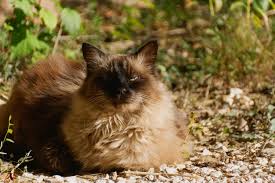
A. Compatibility with Children and Other Animals
The Balinese cat is renowned for its affectionate nature, sociable demeanor, and playful personality, making it an excellent choice for families with children and other pets. Let’s assess the breed’s compatibility with children and other animals, discussing interactions with kids and tolerance for other pets.
1. Children
Balinese cats are known for their gentle and patient demeanor, making them well-suited for households with children. They enjoy being part of the family and are often tolerant of children’s antics, such as petting, cuddling, and playing. However, it’s essential to teach children how to interact with cats respectfully and gently, to prevent accidental injuries or stress for the cat.
Supervise interactions between young children and Balinese cats to ensure both parties are comfortable and safe. Teach children to approach cats calmly and quietly, to avoid startling them, and to respect their boundaries, such as giving them space when they need it. With proper supervision and guidance, Balinese cats can form strong bonds with children and become cherished family members.
2. Other Animals
Balinese cats are generally sociable and friendly with other pets, including dogs and other cats. They enjoy the company of their furry companions and are often willing to share their space and toys with them. However, introductions should be done gradually and with care to ensure a smooth transition and prevent conflicts.
When introducing a Balinese cat to other pets, such as dogs or cats, start by allowing them to sniff each other through a closed door or baby gate to gauge their reactions. If both animals seem curious and relaxed, gradually allow supervised interactions in a neutral territory, such as a separate room or outdoor space. Monitor their interactions closely and intervene if any signs of aggression or stress occur.
With patience and positive reinforcement, most Balinese cats can adapt well to living with other pets and form close bonds with them over time. Provide plenty of resources, such as litter boxes, food dishes, and resting spots, to prevent competition and promote harmony among your pets.
B. Special Considerations for Multi-Pet Households
While Balinese cats are generally adaptable and sociable, there are some special considerations to keep in mind when introducing them to existing pets in a multi-pet household. Here are some tips for ensuring a smooth transition and fostering positive relationships between your Balinese cat and other pets:
1. Gradual Introductions: Take your time when introducing your Balinese cat to other pets, allowing them to acclimate to each other’s presence slowly and gradually. Avoid forcing interactions or overwhelming your cat with too many new stimuli at once.
2. Supervision: Supervise interactions between your Balinese cat and other pets closely, especially during the initial introduction phase. Be prepared to intervene if any signs of aggression or tension arise, and provide positive reinforcement for calm and respectful behavior.
3. Separate Resources: Provide separate resources for each pet, including food dishes, water bowls, litter boxes, and resting spots, to prevent competition and reduce stress. This helps prevent territorial disputes and promotes harmony among your pets.
4. Positive Reinforcement: Use positive reinforcement techniques, such as treats, praise, and playtime, to reward desired behaviors and encourage positive interactions between your Balinese cat and other pets. This helps build trust and foster strong bonds between them over time.
C. Environmental Needs
Balinese cats are adaptable and can thrive in a variety of home environments, but there are some environmental considerations to keep in mind to ensure their well-being and comfort.
1. Space: Balinese cats enjoy having plenty of vertical space to climb and explore, so providing cat trees, shelves, and perches can help satisfy their natural instincts and promote physical and mental stimulation. Ensure your home has enough space for your Balinese cat to move around freely and engage in play and exercise.
2. Special Environment: Balinese cats are indoor cats by nature and should be kept indoors to protect them from potential dangers such as traffic, predators, and environmental hazards. Create a safe and stimulating indoor environment for your Balinese cat, with plenty of toys, scratching posts, and cozy hiding spots to keep them entertained and comfortable.
3. Temperature: Balinese cats have a short, fine coat that provides minimal insulation against extreme temperatures, so it’s essential to keep your home at a comfortable temperature year-round. Avoid exposing your Balinese cat to excessively hot or cold environments, and provide access to warm bedding and cozy spots to snuggle up in during colder weather.
VII. Adoption and Breeder Considerations for the Balinese Cat
A. Encouraging Adoption from Shelters or Rescue Organizations
When considering bringing a Balinese cat into your home, adopting from shelters or rescue organizations is a compassionate and rewarding option. Let’s explore the benefits of adopting a cat in need of a loving home and why choosing adoption can make a positive difference in the life of a Balinese cat.
1. Saving a Life
One of the most significant benefits of adopting a Balinese cat from a shelter or rescue organization is the opportunity to save a life. Many cats in shelters are in need of loving homes and may face euthanasia if not adopted. By opening your heart and home to an adopted cat, you are giving them a second chance at life and providing them with the love and care they deserve.
2. Supporting Animal Welfare
Choosing to adopt a Balinese cat from a shelter or rescue organization helps support animal welfare initiatives and reduce pet overpopulation. Shelters and rescue organizations work tirelessly to rescue, rehabilitate, and rehome homeless and abandoned animals, and your adoption fee helps support their ongoing efforts to care for animals in need.
3. Finding the Perfect Match
Shelters and rescue organizations often have a diverse selection of cats available for adoption, including Balinese cats of various ages, colors, and personalities. Whether you’re looking for a playful kitten or a mellow senior cat, you’re likely to find the perfect match for your family at a shelter or rescue organization. Adoption counselors can help match you with a Balinese cat that fits your lifestyle, preferences, and needs.
4. Health and Wellness
Contrary to common misconceptions, cats available for adoption from shelters and rescue organizations are often in good health and have received necessary veterinary care, including vaccinations, spaying or neutering, and microchipping. Many shelters also conduct behavioral assessments to ensure that cats are well-socialized and suitable for adoption into loving homes.
5. Building a Bond
When you adopt a Balinese cat from a shelter or rescue organization, you’re not just gaining a pet—you’re gaining a loyal companion and lifelong friend. Shelter cats are often incredibly grateful for the love and care they receive in their new homes and form strong bonds with their adoptive families. The bond you build with your adopted Balinese cat will be a source of joy, companionship, and unconditional love for years to come.
6. Making Room for More
By adopting a Balinese cat from a shelter or rescue organization, you’re not only saving one cat’s life—you’re also making room for more cats in need to be rescued and rehomed. Every adoption creates space in shelters and rescue organizations for more animals to be rescued from overcrowded shelters or abusive situations, giving them a chance at a better life.

B. Selecting a Reputable Balinese Cat Breeder
If you’re considering purchasing a purebred Balinese cat, selecting a reputable breeder is paramount to ensure the health, well-being, and quality of your new feline companion. Let’s discuss the importance of ethical breeding practices and health screenings when choosing a Balinese cat breeder, as well as provide guidance on how to identify a reputable breeder.
1. Ethical Breeding Practices
Reputable Balinese cat breeders adhere to strict ethical breeding practices aimed at producing healthy, well-adjusted kittens with desirable traits consistent with the breed standard. Here are some key factors to consider when evaluating a breeder’s breeding practices:
- Health and Genetic Testing: A responsible breeder conducts comprehensive health screenings and genetic testing on breeding cats to identify and prevent hereditary health conditions and genetic disorders. Health screenings may include tests for conditions such as hypertrophic cardiomyopathy (HCM), hip dysplasia, and progressive retinal atrophy (PRA).
- Breeding Program: Look for breeders who prioritize the health, temperament, and conformation of their cats over profit. A reputable breeder will have a well-planned breeding program aimed at improving the breed and preserving its characteristics while prioritizing the welfare of their cats and kittens.
- Socialization and Care: Ethical breeders provide a nurturing and enriching environment for their cats and kittens, with ample socialization, love, and attention from birth. Kittens raised in a loving home environment are more likely to be well-adjusted, confident, and sociable pets.
- Transparency and Accountability: A reputable breeder is transparent about their breeding practices, health testing protocols, and the lineage of their cats. They should be willing to provide documentation of health screenings, pedigrees, and any relevant certifications or registrations.
2. Health Screenings
Health screenings play a crucial role in ensuring the health and well-being of Balinese cats and their offspring. Here are some common health screenings and tests that reputable breeders may perform:
- Hypertrophic Cardiomyopathy (HCM) Screening: HCM is a common heart condition in cats, including Balinese cats. Breeders may perform echocardiograms or DNA tests to screen for HCM in their breeding cats.
- Hip Dysplasia Screening: Hip dysplasia is a genetic condition that affects the hip joints and can cause pain and mobility issues in cats. Breeders may perform hip X-rays to screen for hip dysplasia in their breeding cats.
- Progressive Retinal Atrophy (PRA) Screening: PRA is a hereditary eye disorder that can lead to vision loss in cats. Breeders may perform DNA tests to screen for PRA in their breeding cats.
- Blood Typing: Balinese cats, like other Siamese-derived breeds, are prone to blood type ABO incompatibility, which can cause neonatal isoerythrolysis (NI). Breeders may perform blood typing tests to prevent breeding cats with incompatible blood types.
3. How to Identify a Reputable Breeder
When searching for a reputable Balinese cat breeder, consider the following factors:
- Reputation: Look for breeders with a positive reputation within the cat fancy community and among past customers. Seek recommendations from reputable cat associations, veterinarians, and fellow cat enthusiasts.
- Health Guarantees: A reputable breeder provides health guarantees for their kittens and is willing to take back or assist with rehoming a kitten if the new owner is unable to care for them.
- Visiting Facilities: Arrange to visit the breeder’s facilities in person to meet the cats and assess the living conditions. A reputable breeder will welcome prospective buyers and be transparent about their breeding practices.
- Ask Questions: Don’t hesitate to ask the breeder questions about their breeding program, health testing protocols, and the care and socialization of their cats and kittens. A reputable breeder will be happy to answer your questions and provide information about their cats.
C. Cost Considerations and Potential Adoption Fees
When considering adopting or purchasing a Balinese cat, it’s essential to understand the financial aspects involved to make an informed decision that aligns with your budget and preferences. Let’s discuss cost considerations, potential adoption fees, and insights into the financial aspects of welcoming a Balinese cat into your home.
1. Adoption Fees
If you choose to adopt a Balinese cat from a shelter or rescue organization, you can expect to pay an adoption fee to cover the cost of veterinary care, spaying or neutering, vaccinations, microchipping, and other expenses associated with caring for the cat while in the shelter’s care. Adoption fees can vary depending on the organization, location, age, and health status of the cat, but they typically range from $50 to $200 or more.
While adoption fees may seem daunting at first glance, they often represent a significant savings compared to the cost of purchasing a Balinese cat from a breeder. Additionally, adoption fees help support the shelter or rescue organization’s ongoing efforts to care for homeless and abandoned animals and provide them with a second chance at life.
2. Purchasing from a Breeder
If you decide to purchase a Balinese cat from a reputable breeder, you can expect to pay a higher upfront cost compared to adopting from a shelter or rescue organization. The cost of purchasing a Balinese cat from a breeder can vary depending on factors such as the cat’s pedigree, lineage, age, color, coat pattern, and breeding quality.
On average, the cost of purchasing a Balinese cat from a breeder ranges from $500 to $2000 or more, with show-quality or breeding-quality kittens commanding higher prices. Keep in mind that the initial purchase price is just one aspect of the financial investment involved in owning a Balinese cat, as you’ll also need to budget for ongoing expenses such as food, litter, veterinary care, grooming supplies, and other necessities.
3. Additional Expenses
In addition to the initial adoption or purchase fee, there are several other financial considerations to keep in mind when welcoming a Balinese cat into your home:
- Veterinary Care: Budget for routine veterinary care, including wellness exams, vaccinations, parasite prevention, dental care, and any necessary medical treatments or emergency care.
- Food and Supplies: Allocate funds for high-quality cat food, litter, litter boxes, feeding dishes, water bowls, scratching posts, toys, grooming supplies, and other essentials to keep your Balinese cat happy and healthy.
- Grooming: Balinese cats have a semi-long, silky coat that requires regular grooming to prevent mats and tangles. Budget for grooming supplies such as brushes, combs, and grooming tools, as well as occasional professional grooming services if needed.
- Training and Behavior: Consider investing in training classes or behavior consultations to address any behavioral issues or challenges that may arise, such as litter box training, scratching behavior, or socialization.
4. Budgeting and Financial Planning
Before adopting or purchasing a Balinese cat, take the time to assess your finances and create a budget to ensure you can afford the ongoing expenses associated with cat ownership. Consider factors such as your income, living expenses, savings, and any unexpected or emergency expenses that may arise.
Be realistic about your financial situation and ability to provide for the needs of a Balinese cat throughout their lifetime, which can be 12 to 16 years or more. Consider setting aside a separate savings fund for veterinary expenses or unexpected emergencies to ensure you’re prepared for any unexpected costs that may arise.
VIII. Conclusion
A. Key Points about the Balinese Cat
In conclusion, the Balinese cat is a unique and captivating breed known for its elegance, intelligence, and affectionate nature. Let’s recap the breed’s defining characteristics and temperament:
- Graceful Appearance: The Balinese cat is distinguished by its slender, athletic build, striking blue almond-shaped eyes, and silky, semi-long coat that comes in various colors and patterns.
- Temperament: Balinese cats are renowned for their gentle, affectionate, and social nature. They form strong bonds with their human companions and enjoy being involved in family activities. Balinese cats are vocal and communicative, often engaging in conversations with their owners.
- Playful and Energetic: Despite their regal appearance, Balinese cats are playful and energetic creatures that enjoy interactive play and mental stimulation. They thrive in environments that provide ample opportunities for exercise, exploration, and enrichment.
- Intelligent and Curious: Balinese cats are highly intelligent and curious animals that enjoy problem-solving and exploring their surroundings. They appreciate environmental enrichment and mental stimulation to keep their minds engaged and prevent boredom.
B. Importance of Responsible Ownership and Proper Care
While the Balinese cat is undoubtedly a wonderful companion, it’s essential for prospective owners to consider all aspects of cat ownership before bringing this breed into their home. Responsible ownership and proper care are paramount to ensuring the health, well-being, and happiness of your Balinese cat. Here’s why:
By emphasizing the importance of responsible ownership and proper care, prospective owners can ensure that their Balinese cat receives the love, attention, and care they need to thrive and live a happy, healthy life as part of their family. With the right approach, owning a Balinese cat can be a rewarding and fulfilling experience that brings joy, companionship, and unconditional love into your life for years to come.
- Commitment: Owning a Balinese cat is a long-term commitment that requires time, dedication, and financial resources. Prospective owners should be prepared to provide for the needs of their Balinese cat throughout their lifetime, which can be 12 to 16 years or more.
- Health and Wellness: Proper veterinary care, nutrition, grooming, and environmental enrichment are essential for maintaining the health and well-being of your Balinese cat. Regular veterinary check-ups, vaccinations, parasite prevention, and dental care are crucial for preventing illness and ensuring your cat’s longevity.
- Socialization and Enrichment: Balinese cats thrive on social interaction and mental stimulation, so it’s essential to provide plenty of opportunities for play, exercise, and environmental enrichment. Interactive toys, scratching posts, climbing structures, and puzzle feeders can help keep your Balinese cat mentally and physically stimulated.
- Safety and Security: Create a safe and secure environment for your Balinese cat by pet-proofing your home, keeping toxic substances out of reach, providing a comfortable and secure sleeping area, and ensuring they have access to fresh water, nutritious food, and a clean litter box.
By emphasizing the importance of responsible ownership and proper care, prospective owners can ensure that their Balinese cat receives the love, attention, and care they need to thrive and live a happy, healthy life as part of their family. With the right approach, owning a Balinese cat can be a rewarding and fulfilling experience that brings joy, companionship, and unconditional love into your life for years to come.
FAQs about the Balinese Cat
Are Balinese cats hypoallergenic?
While no cat breed is completely hypoallergenic, Balinese cats are often considered more hypoallergenic than other breeds. This is because they have a single coat of fine fur that produces less dander, the primary allergen found in cat hair. However, individuals with severe allergies may still experience symptoms when exposed to Balinese cats.
Do Balinese cats require special grooming?
Balinese cats have a semi-long, silky coat that requires regular grooming to prevent mats and tangles. Weekly brushing with a fine-toothed comb or slicker brush can help remove loose hair and prevent shedding. Additionally, regular nail trimming, ear cleaning, and dental care are essential parts of Balinese cat grooming routine.
Are Balinese cats vocal?
Yes, Balinese cats are known for their vocal and chatty nature. They enjoy engaging in conversations with their owners and may vocalize to express their needs, desires, or simply to seek attention. Their melodic voice and communicative nature are part of their charm.
Do Balinese cats have any specific dietary requirements?
Balinese cats have similar dietary needs to other domestic cats. It’s essential to provide them with a balanced diet that is appropriate for their age, weight, and activity level. High-quality cat food that is rich in protein, vitamins, and minerals is recommended, along with plenty of fresh water. Consult with your veterinarian for personalized dietary recommendations.
Are Balinese cats prone to any health issues?
While Balinese cats are generally healthy and robust, they may be prone to certain hereditary health conditions, such as hypertrophic cardiomyopathy (HCM), a heart condition, and progressive retinal atrophy (PRA), an eye disorder. Responsible breeders conduct health screenings to minimize the risk of hereditary health issues in their breeding lines.
Do Balinese cats get along well with other pets?
Balinese cats are typically sociable and friendly animals that can get along well with other pets, including dogs and other cats. Proper introductions and gradual socialization are essential when introducing a new Balinese cat to existing pets to ensure a smooth transition and promote harmony in multi-pet households.


